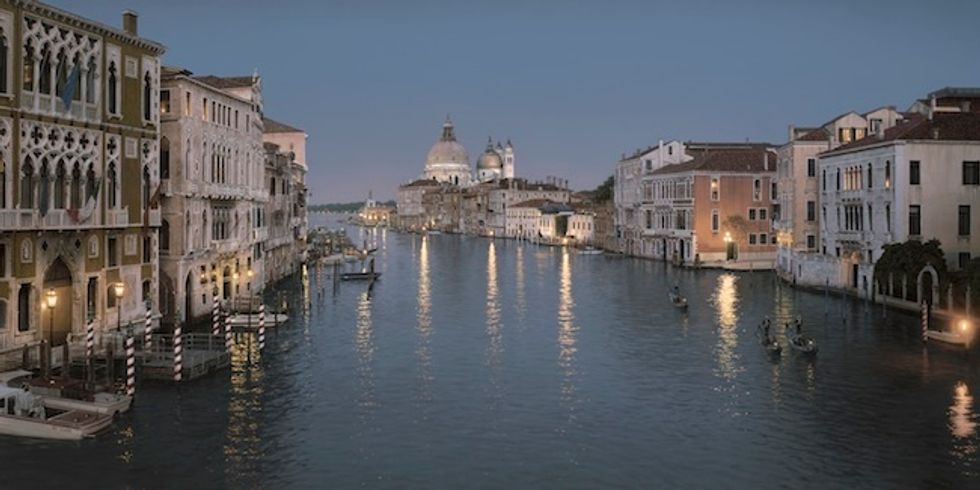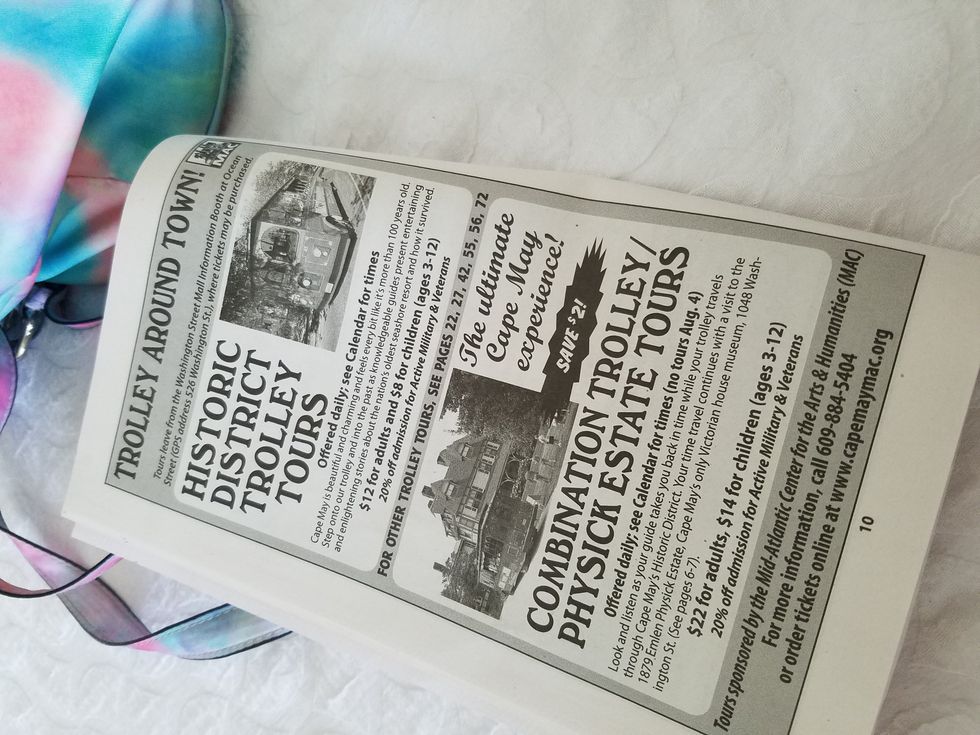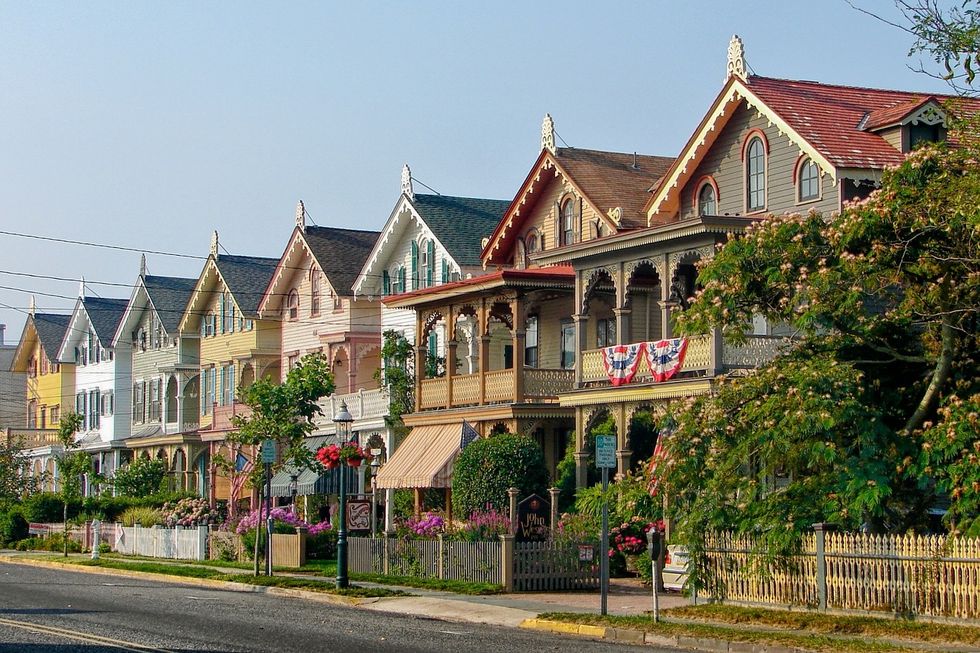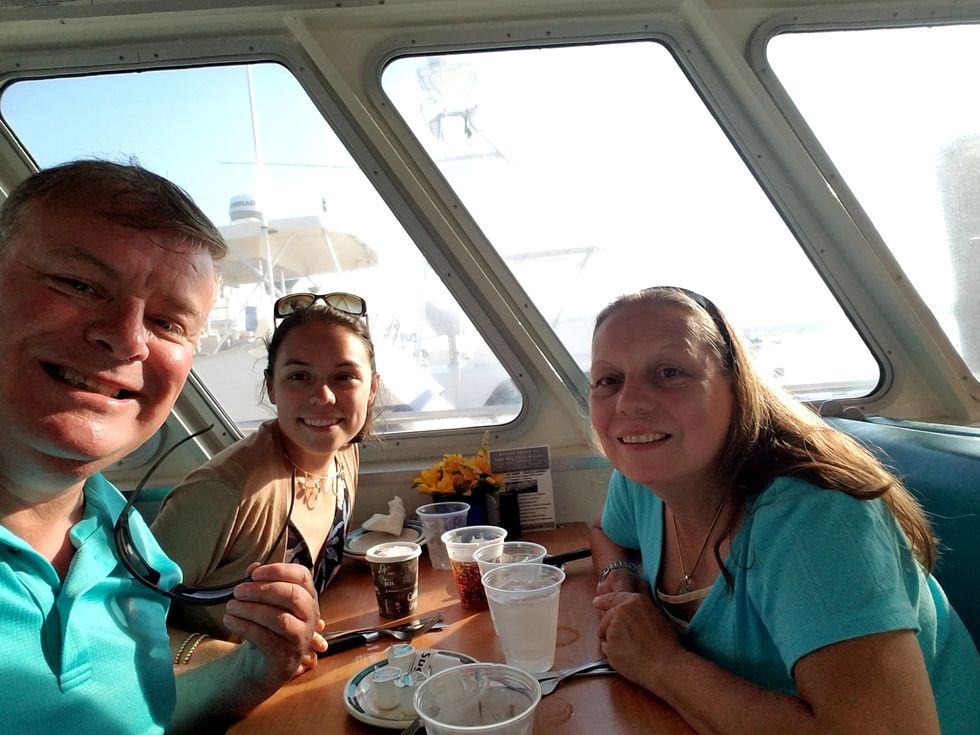The beginning of this month, my family and I took a trip to Cape May beach, NJ. As well as getting some much needed beach time, I learned information about the art world that helped me glean a fresh perspective. In this busy time before many of my peers go back to college, these facts should servel to broaden everyone's mind before being occupied with the information force fed to them in class.
1. Photo-realism is clearer than actual photographs.

A photorealistic painting we saw at the gallery
Rod Chase's Evening in Venice
My mother and I picked up this tidbit from a clerk working the Thomas Kinkade Gallery in Mainstreet Cape May. This wizened, glasses-wearing gentlemen casually explained to us the inventory and history of not only Thomas Kinkade but also the other paintings present. One genre of painting which differed from the Kinkade style was Photorealism. At first, my mother and I had assumed they were photographs but the soft-spoken clerk explained to us that they were paintings.
He explained further that photographs tend to leave particular scenes out of focus but a photorealistic painting is crisp in every corner. Artists will still take certain liberties (like in Rod Chase Evening in Paris pictured above where there is no people or water traffic---an almost impossible occurrence in such a busy waterway) though, so don't mistake their being clearer for being "more real".
2. The Haunted Trolley tours are sponsored by the Mid-Atlantic Center for the Arts and Humanities

The ad from the advertisement book
Shannon Solley
This bit of information is plastered on the haunted trolley's ad in the free advertisement book stacked at the front door in nearly every shop in Cape May---and it seems pretty useless at first. It's very telling, however, of the importance of something as silly as a ghost tour to the human experience. With politicians endorsing degrees in business and technology while swiftly dismissing education in the Arts and Humanities most of us often lose sight of why those fields of study are present in Academia in the first place.
Life is hard and cruel and without such whimsy (or as whimsical as a haunted tour can be) to reward us for our daily grinds, those labors would seem more and more trivial over time. Whether our hustles are or not isn't important, though--- what it is that these attractions make life more palatable. I realized this while sitting in a tour myself, observing a spooked little girl cuddling into her father with his hard-gotten bags under eyes which held an amused sparkle.
3. Thomas Kinkade is deceased

Obviously in going to the Thomas Kinkade gallery we got a quick biography of his life. I will not summarize this summary here, because I feel many of its details to be only somewhat intriguing---all except for one all-too-important-detail: his death. Until the clerk had told us, I had no idea he was dead. This isn't because I'm stupid, its due to the fact that despite Kinkade's status as a household name, news of and around his death was largely ignored by the press. The clerk expressed to us not only his surprise at this occurrence but his disappointment. I mused that this phenomenon is striking in its reversal of the typical scenario where brilliant artists are finally recognized and glorified after they die. At this concept, he cringed and gave his assumptions on why he thought Kinkade's death was looked over.
All his art, in his attempt to make art for the everyday person, was commercialized. It was sold on shows like QVC and his style and methods were seen as a joke to the rest of the art world. Since he wasn't taken seriously by the formal art community, his paintings didn't change substantially in value after his death, therefore, creating a situation in which it was not profitable to give coverage to his death. Basically, the commercial world couldn't make a buck from it so they ignored it while the art world ignored it as well because they didn't see him as a serious artist. The lack of attention to his passing was pretty disheartening to my mother, especially who had always loved his paintings since she was a young girl.
4. When the Mid-Atlantic Center for the Arts and Humanities was started: 1970

To most, this knowledge may seem predictable and boring but I find it interesting that this organization was established during such a turbulent time in American cultural history. When my family and I were on a dolphin watching dinner cruise and were watching the many Victorian buildings pass by on shore, the captain was telling the history behind this group. He explained that in the late 60s early 70s, Cape May's famous Victorian homes were not only dilapidated but unwanted. Several construction firms wanted to knock down the old homes and build new, modern homes. Luckily, a large number of individuals who recognized the cultural value of keeping these homes rallied together and created the Mid-Atlantic Center for the Arts and Humanities.

















